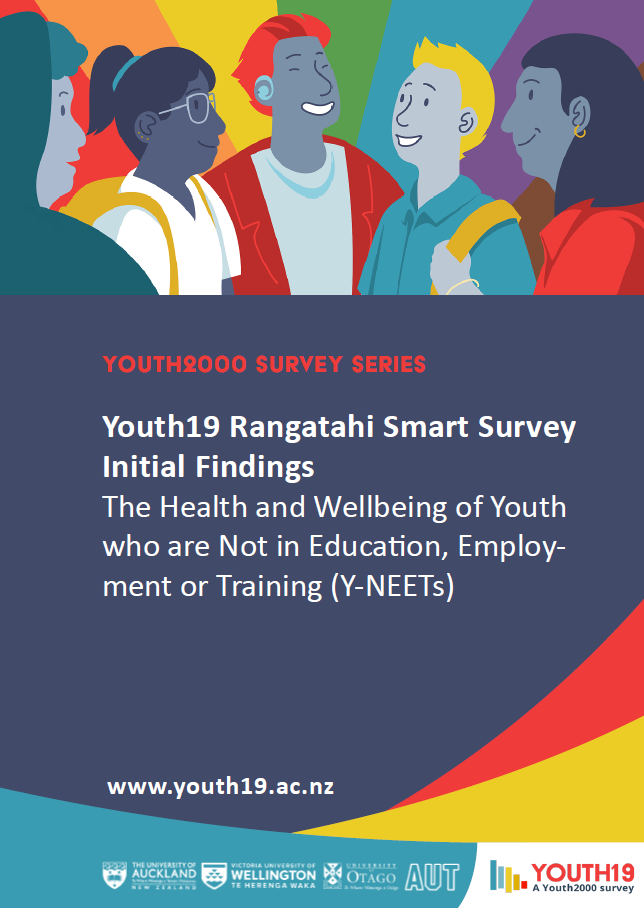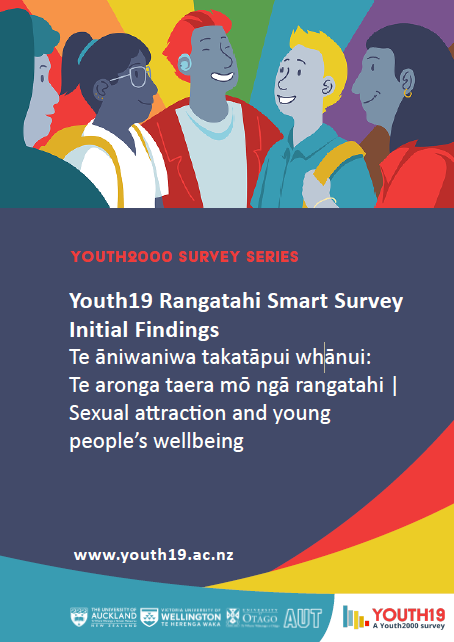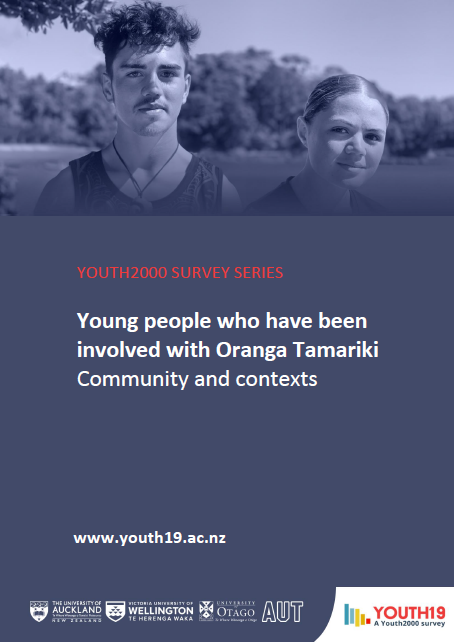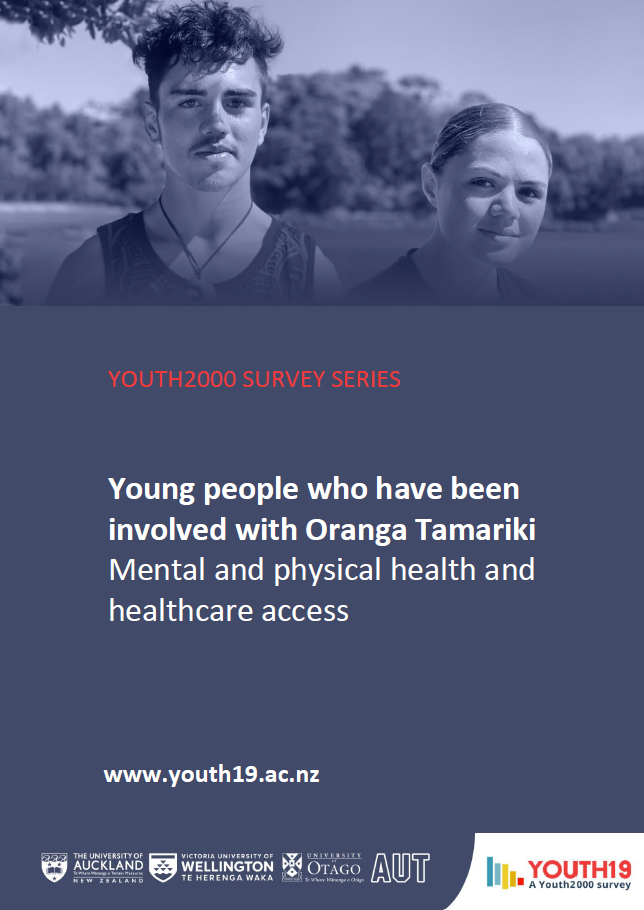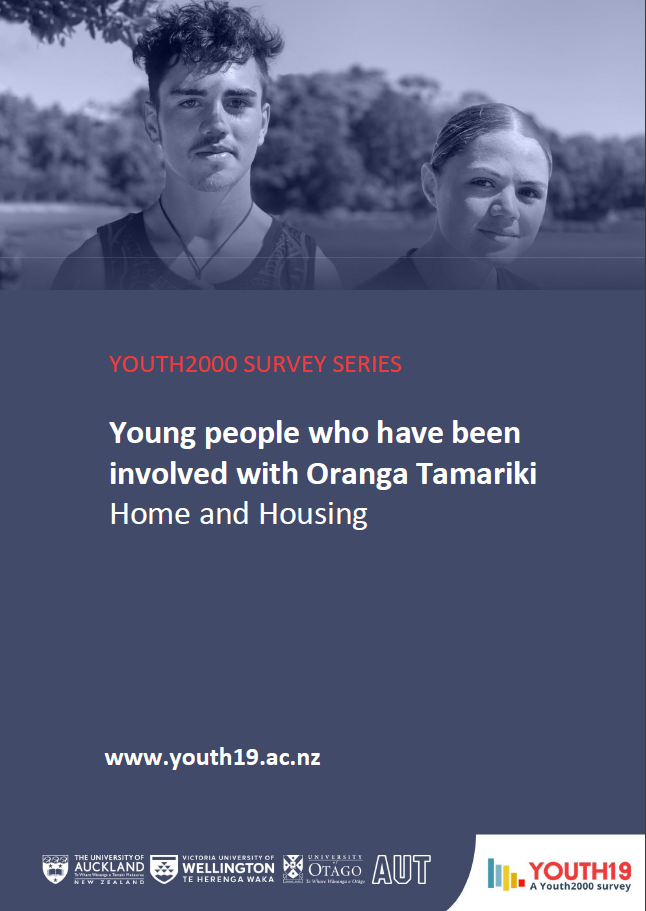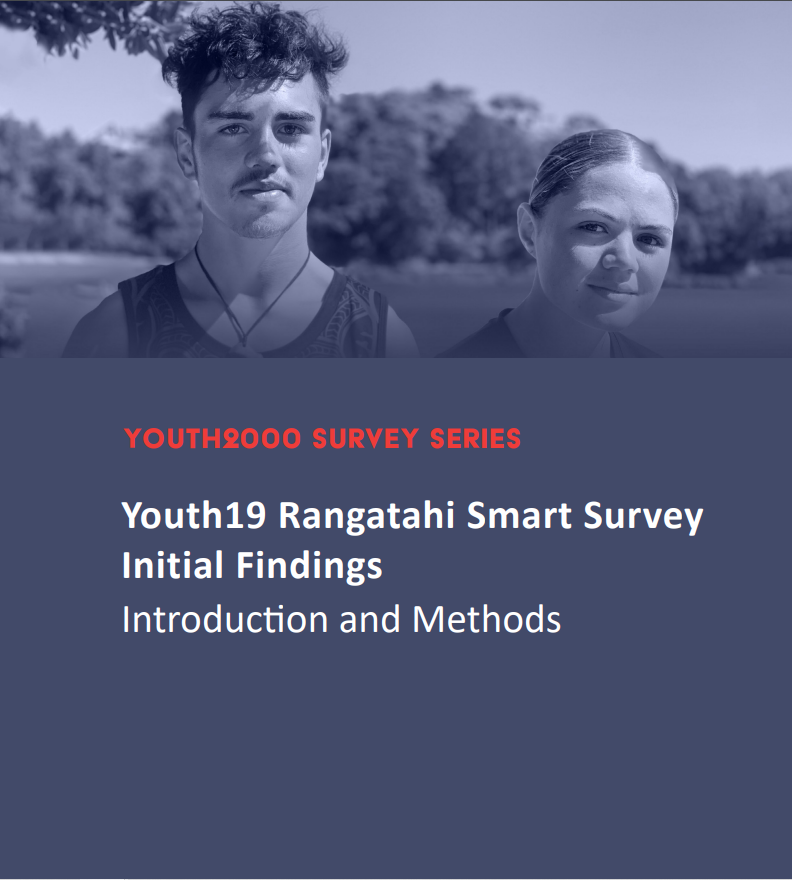This document provides an overview from multiple Youth2000 outputs re youth mental health needs and opportunities for youth mental health gains in Aotearoa.
Register for the in-person launch of this report on 11 October 2024 here.
Talavou o le Moana summarises key findings for Pacific secondary school students in the areas of ethnic and gender identity; family and faith; socioeconomic environments and housing; education; friends and community connections; physical, mental and sexual health; substance use; and healthcare access. This data report gives a vital snapshot into the lives of Pacific young people. This information was collected as part of the Youth19 Rangatahi Smart Survey, the latest in the Youth2000 survey series conducted by the Adolescent Health Research Group (AHRG). The findings highlight the resilience and strength of Pacific talavou (young people), and the complexities they must navigate.
You can watch the launch of this report here.
In this series of reports to be published in 2022 we use survey data from Youth19 to explore life for young people who report being involved with Oranga Tamariki or Child Youth and Family Services.
This report focuses on the lives of takatāpui and rainbow young people from mainstream schools, alternative education, and those not in education, employment or training. The report explores topics for trans-gender and same-sex or multiple-sex attracted young people, including their cultural identity, home and housing, health and wellbeing, and community involvement for takatāpui and rainbow young people who have never been involved with Oranga Tamariki, and who have ever been involved.
In this series of reports to be published in 2022 we use survey data from Youth19 to explore life for young people who report being involved with Oranga Tamariki or Child Youth and Family Services.
This report explores the themes of the Youth19 open-text survey responses for young people who have ever been involved with Oranga Tamariki.
In this series of reports to be published in 2022 we use survey data from Youth19 to explore life for young people who report being involved with Oranga Tamariki or Child Youth and Family Services.
This report focuses on the community involvement, substance use, school life, and violence for young people who have never been involved with Oranga Tamariki, ever been involved, and are currently involved.
In this series of reports to be published in 2022 we use survey data from Youth19 to explore life for young people who report being involved with Oranga Tamariki or Child Youth and Family Services.
This report focuses on the mental health, physical health, and access to healthcare for young people who have never been involved with Oranga Tamariki, ever been involved, and are currently involved.
In this series of reports to be published in 2022 we use survey data from Youth19 to explore life for young people who report being involved with Oranga Tamariki or Child Youth and Family Services.
This report focuses on life at home and the security of housing for young people who have never been involved with Oranga Tamariki, ever been involved, and are currently involved.
In this series of reports to be published in 2022 we use survey data from Youth19 to explore life for young people who report being involved with Oranga Tamariki or Child Youth and Family Services.
This report focuses on the cultural connectedness of young people who have never been involved with Oranga Tamariki, ever been involved, and are currently involved.
In this report we use Youth19 data to explore the wellbeing of Aotearoa secondary school students with the following identities :
• Rainbow rangatahi Māori
• Pacific Rainbow young people
• Rangatahi Māori with a disability or chronic condition
• Pacific young people with a disability or chronic condition
• Rainbow young people with a disability or chronic condition
• Young people who are both Māori and Pacific.
See also our ‘Intersecting Identities’ briefs, containing a snapshot of key findings for each group.
And watch our webinar, presented by A.Prof Terryann Clark, Dr Jemaima Tiatia-Seath, A.Prof Terry Fleming, & Rosina Buchanan.
“The beautiful thing about the growing number of young New Zealanders who name Asia as a place of origin is that they simply cannot be contained within the boxes that New Zealand often assigns to them – and their many special strengths, challenges, and experiences are mapped out in these pages.” –– Anya Satyanand, CEO Leadership New Zealand
This report highlights the health and wellbeing findings for Asian students living in Aotearoa from the Youth19 Rangatahi Smart Survey. Watch our launch webinar here.
“Sexuality is normal part of life and young people should be equipped with the knowledge, skills and services that support them to make healthy informed decisions, now and in their future relationships. As part of Youth19, secondary school students answered questions about their sexual and reproductive health…”
This report highlights the sexual and reproductive health findings from the Youth19 Rangatahi Smart Survey.
“In Youth19, most students (78%) reported that they had accessed at least one health care service in the previous year. Accessing health care was more common among students from wealthier schools and communities…”
This report highlights Youth19 findings about students’ access to health care services.
Webinar
In this video, Associate Professor Terryann Clark and Associate Professor Terry Fleming discuss the youth mental health findings with an expert panel: Tahu Potiki and Lia Apperley, Victoria University of Wellington students; Dr Arran Culver, Ministry of Health; Julian Barnett, Youthline and Sue Dashfield, Werry Workforce Whāraurau.
This report highlights findings from the Youth19 Rangatahi Smart Survey (Youth19) about smoking, vaping, alcohol use, and use of marijuana and other drugs.
“Vaping at least weekly was more prevalent among students living in small towns (12%) than in urban areas (7%), and among older students. Similar differences were found for using e-cigarettes monthly or more often. In contrast to cigarette smoking, regular vaping (weekly or monthly) was more common in low, rather than high deprivation communities…”
“Youth19 builds on the work of the Adolescent Health Research Group (AHRG) and co-ordinates closely with the group. The AHRG was established in 1997 to gather up-to-date, representative, trustworthy data to support the health and wellbeing of New Zealand’s young people…”
This report provides the background of the Youth19 survey and detail about who was surveyed, methods, rationale and interpreting data.






